China Ball Valve Manufacturer
Your Trusted Ball Valve Supplier
We are one of the leading producers of industrial valves at BYZER, specializing in manufacturing high-quality Electri ball valves, pneumatic ball valve, and more. Each valve is produced according to the most stringent international standards. Our advanced production facility in China adheres to ANSI, API, DIN, GOST, BS, JIS, and China GB standards. By upholding the principles of quality, innovation, and a rebellious spirit, we ensure our products consistently deliver the best quality and top performance.
Cast iron Butterfly valve
PVC Butterfly valve
High Temperature Butterfly valve
Stainless steel Butterfly valve
Metal Hard Seal Butterfly valve
Sanitary Butterfly Valve
REQUEST A QUOTE FOR MORE DETAILS
How to buy a right Ball Valves for your project
What is a Ball Valve?
A ball valve is a quarter-turn valve that uses a hollow, perforated, and pivoting ball to control flow. When the valve is open, the ball’s hole aligns with the flow, allowing it to pass through. Turning the handle 90 degrees closes the valve, blocking the flow. Ball valves are known for their durability and excellent shutoff capabilities.
How Does Ball Valve Work?
Ball valves control flow with a rotating ball featuring a central hole (port). The valve can have multiple ports:
- Two-Way Ball Valves: Standard on/off control with two ports.
- Multi-Port Valves (3-way, 4-way, etc.): Direct flow from multiple sources or divert in different directions.
Control is either manual (handles/levers) or automated (electric, pneumatic, hydraulic actuators). Manual control requires operator presence, while actuators offer remote or automated operation, making them ideal for complex or hard-to-reach systems. Actuation enhances precision, safety, and convenience in advanced control setups.



What Are Ball Valves Used For?
Ball valves are versatile and widely used in various industries due to their durability and effective sealing properties. Here’s a look at their applications:
- Oil and Gas: Ideal for high-pressure and high-temperature environments, ensuring safe and efficient flow control.
- Water Treatment: Provides reliable control and shutoff in treatment plants and distribution systems.
- Chemical Processing: Handles aggressive chemicals with ease, ensuring safe operations.
- HVAC: Manages temperature and flow efficiently in heating, ventilation, and air conditioning systems.
- Pharmaceutical: Maintains sterile and sanitary conditions in manufacturing processes.
Electric Ball Valves
- Precision Control: Ideal for applications needing precise flow regulation.
- Remote Operation: Suitable for hard-to-reach locations and automation.
Pneumatic Ball Valves
- Speed: Fast operation for processes requiring quick changes.
- Reliability: Durable in harsh environments.
Advantages of Ball Valves
Quick Operation: Ball valves are incredibly easy to operate. A simple quarter-turn of the handle opens or closes the valve fully. This makes them ideal for applications requiring rapid shutoff.
Durability: Built to last, ball valves resist wear and corrosion. Their robust construction ensures long-term reliability even under tough conditions.
Tight Seal: The design of ball valves ensures a tight seal with minimal leakage. When the valve is closed, the ball seats tightly against the valve body, effectively stopping flow.
Versatility: Ball valves can handle a variety of media, including liquids, gases, and slurries. They are suitable for a wide range of applications, from industrial processes to residential plumbing.
Low Maintenance: Due to their simple design and fewer moving parts, ball valves require minimal maintenance. This makes them cost-effective over their lifespan.
High Pressure and Temperature Tolerance: Ball valves can withstand high pressures and temperatures, making them suitable for demanding applications in industries like oil and gas, chemical processing, and power generation.
Minimal Pressure Drop: When fully open, ball valves have a low pressure drop and minimal flow resistance. This efficiency is crucial for applications where maintaining flow rate is important.

Ball Valve Parts
Ball valves consist of key components, each designed for specific functions and materials:
valve Body Options for Ball Valves
The body of a ball valve is the main housing that holds all internal components and connects to the pipeline. At our company, we emphasize diverse and customizable options to meet specific industry needs.
| Material | Advantage |
|---|---|
| Ductile Iron | Durable and cost-effective. Suitable for general applications. |
| Cast Steel (Carbon Steel) | Strong and economical. Ideal for high-pressure situations. |
| Stainless Steel (SUS304, SUS316, SUS316L) | High corrosion resistance, suitable for harsh environments. |
| Special Materials (UPVC, CPVC, PTFE) | Excellent anti-corrosion properties. Used for chemical applications. |
Types of Ball Valves by Body Design
Ball valves come in various body designs, each tailored to specific operational needs. Choosing the right type of ball valve can make a big difference in your system’s performance and maintenance efficiency. Let’s dive into the main types of ball valves based on their body construction, exploring their advantages and disadvantages to help you make the best choice.
One-Piece Ball Valve
Structure: Made from a single piece of material, this design integrates the valve body, inlet, and outlet ports, offering a simple structure with minimal leak paths.
Advantages: If you’re looking for a compact and cost-effective solution for low-pressure applications, the one-piece ball valve is a reliable choice. Its design limits potential leak points, making it a straightforward option for smaller systems.
Disadvantages: Due to its one-piece design, this valve is not serviceable. If internal parts fail or wear out, the entire valve must be replaced. This can lead to higher long-term costs in systems where maintenance is frequent.
Applications: Commonly used in applications with less demanding requirements, like residential water systems or basic flow control tasks. Ideal where simplicity and reliability at low pressures are key.
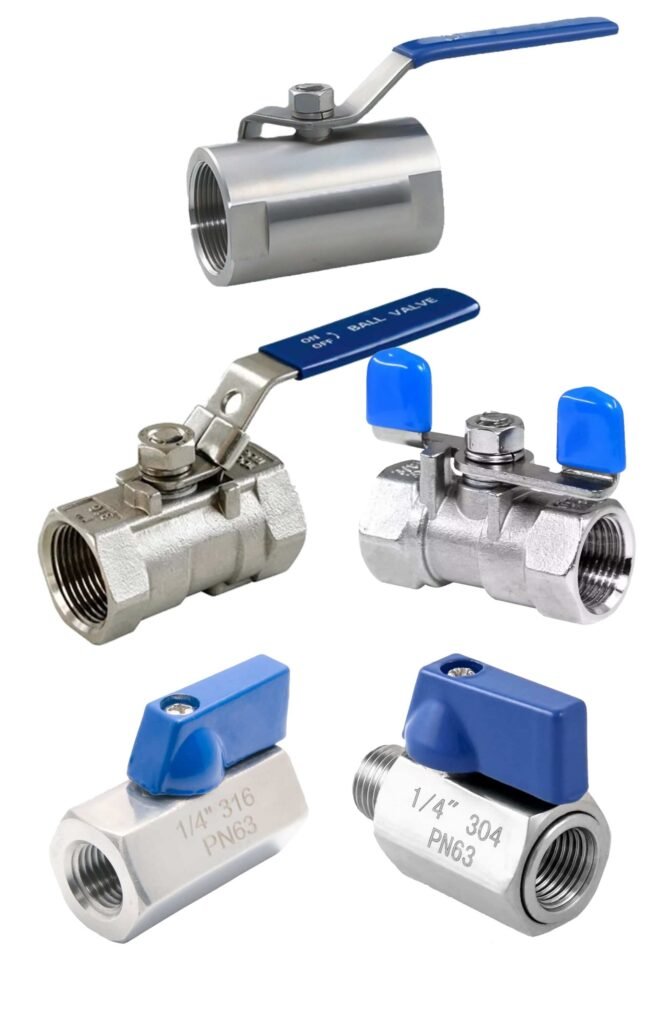

Two-Piece Ball Valve
Structure: This type features two separate body components that bolt together, allowing for a slightly more complex internal structure.
Advantages: The two-piece design provides more flexibility in terms of materials and is suitable for larger bore sizes. This makes it an excellent middle-ground choice when you need a valve that’s both versatile and robust without overcomplicating things.
Disadvantages: Although two-piece valves offer some maintenance capabilities, disassembly can still be cumbersome, especially if the bolts are corroded or if access is limited. This can add complexity and time to maintenance tasks.
Applications: You’ll find these valves in industries like chemical processing, water treatment, and general manufacturing. They’re great if you need a valve that handles moderate pressures and sizes without sacrificing ease of use.
Three-Piece Ball Valve
Structure: Consists of three main parts: two end caps and a central body, allowing easy access to internal components.
Advantages: Does your operation require frequent maintenance or repairs? The three-piece design allows you to access the valve’s internals without fully removing the valve from the pipeline. This is perfect for applications where downtime is not an option.
Disadvantages: While great for maintenance, the three-piece design tends to be bulkier and more expensive than simpler designs. It may not be necessary for low-maintenance systems, adding unnecessary complexity and cost.
Applications: Popular in industries with high maintenance needs, such as food and beverage, pharmaceuticals, or any environment dealing with corrosive or high-cycle operations.


Top Entry Ball Valve
Structure: The valve body has an entry point from the top, which makes maintenance straightforward since the internal parts can be accessed without removing the valve from the pipeline.
Advantages: This type is ideal if you’re in a setting where regular inspections or quick repairs are necessary. Top entry valves allow maintenance teams to work efficiently, saving you time and reducing process interruptions.
Disadvantages: Top entry valves can be more expensive and complex to install. They require more space for access and are generally more suited to larger, more critical applications, which might not justify the cost in smaller, less demanding setups.
Applications: Frequently used in critical sectors like petrochemicals, refining, and power generation where continuous operation and reliability are crucial.
Split Body Ball Valve
Structure: Designed with a split body, usually along a vertical plane, which can be disassembled to access the valve’s inner workings.
Advantages: If you’re managing high-pressure systems or large bore sizes, split body valves offer easier maintenance without compromising on performance. Their design allows for simpler repairs and less downtime, which can be a game changer in demanding environments.
Disadvantages: Split body valves, while easy to maintain, can have a larger number of potential leak paths due to the multiple body joints. This requires more frequent inspections and possibly tighter quality control during assembly.
Applications: Ideal for heavy-duty use in oil and gas, chemical processing, and other industries that require robust solutions for high-stakes operations.

Ball body Options for Ball Valves
The body of a ball valve is a critical component that houses the internal parts and connects directly to the pipeline, creating a secure interface for fluid flow. Ball valve bodies are typically made from robust materials like stainless steel, carbon steel, brass, and various plastics (e.g., PVC). The choice of body material depends on factors such as pressure, temperature, and the type of media being controlled.
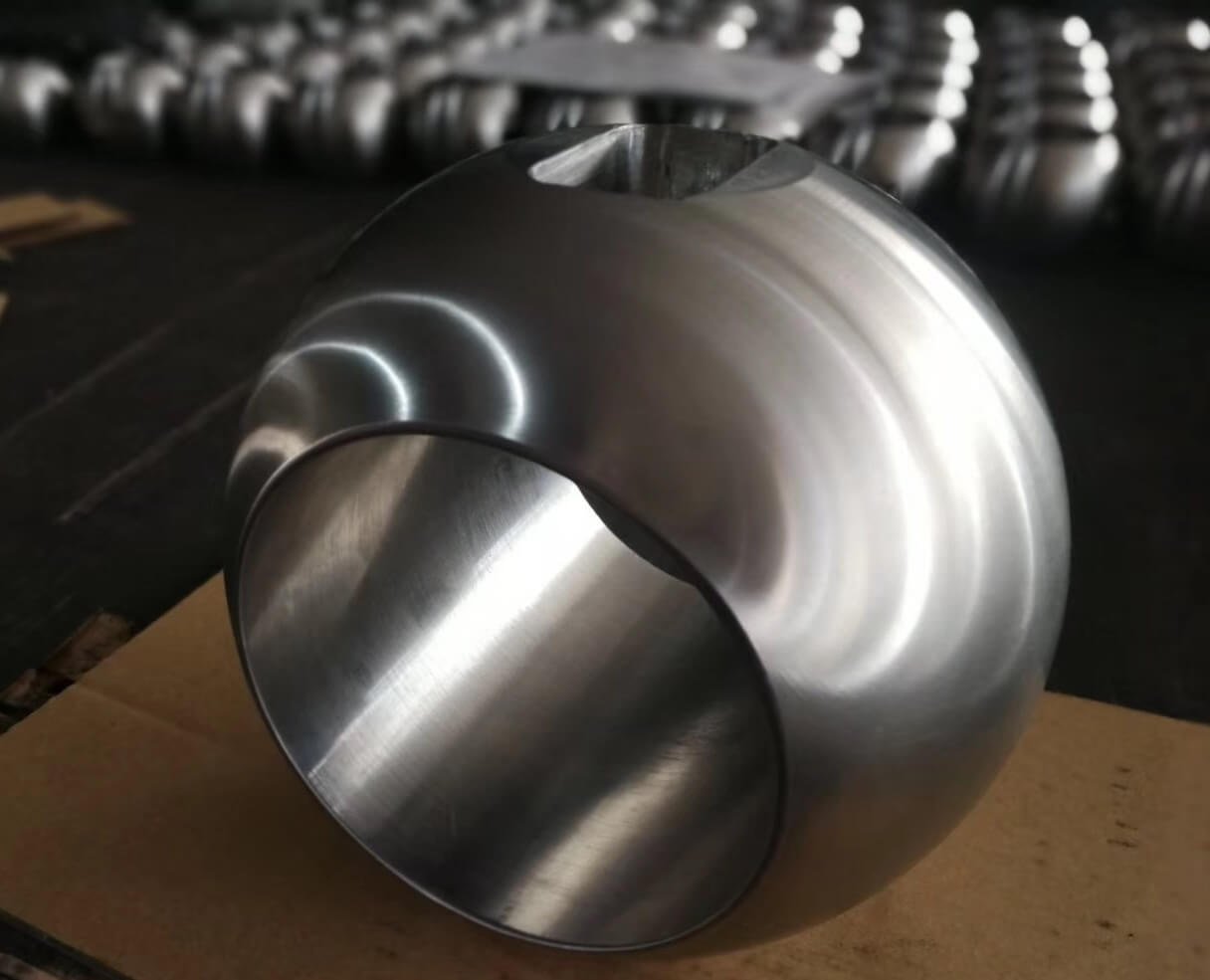
| Material | Advantage |
|---|---|
| Stainless Steel | Corrosion-resistant, suitable for various media including aggressive chemicals. |
| Carbon Steel | High mechanical strength, ideal for high-pressure applications. |
| Ceramic | Highly resistant to abrasion and high temperatures, used in severe conditions. |
| Plastic (PTFE, PVC) | Lightweight, chemical-resistant, used for lower-pressure applications. |
| Tungsten Carbide Coated | Provides excellent wear resistance, applied via HVOF spraying. |
| Electroless Nickel Plating (ENP) | Uniform thickness, excellent corrosion resistance. |
Seat Options for Butterfly Valves
The seat of a butterfly valve is crucial for providing a seal between the disc and the body. Seats can be categorized into two main types: soft seats and hard seats, each suitable for different applications.

Soft Seated
Soft seats are made from elastomeric materials that provide excellent sealing capabilities. They are ideal for low to medium pressure applications where tight shutoff is required.
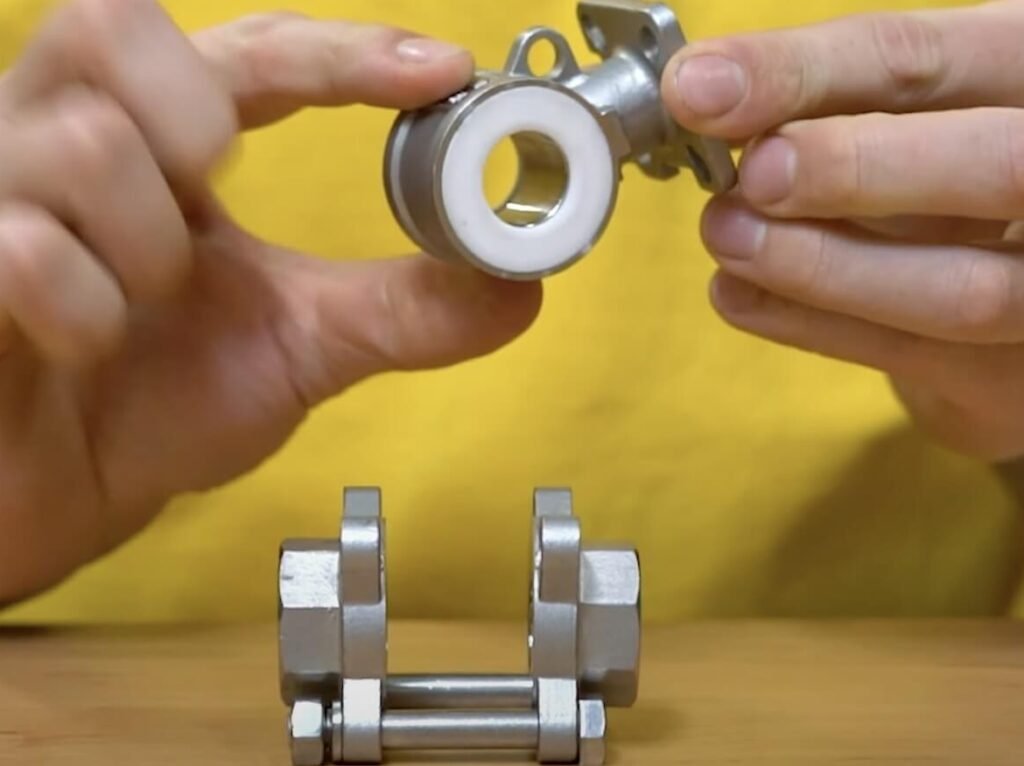
| Material | Advantage |
|---|---|
| NBR (Nitrile Rubber) | Standard rubber suitable for water and air applications, offering good resistance to oils and fuels. |
| FKM (Viton) | Provides high chemical resistance, making it ideal for handling aggressive chemicals. |
| EPDM (Ethylene Propylene Diene Monomer) | Known for excellent wear resistance and durability, suitable for a wide range of temperatures and applications. |
| PTFE (Polytetrafluoroethylene) | Offers high chemical resistance and low friction, making it ideal for aggressive chemical applications and clean environments. |
| UPVC (Unplasticized Polyvinyl Chloride) | Provides excellent chemical resistance, suitable for corrosive environments. |
Hard Seated(Metal Seated)
Hard seats are designed for high-temperature and high-pressure applications. They are made from durable materials that can withstand more extreme conditions compared to soft seats.
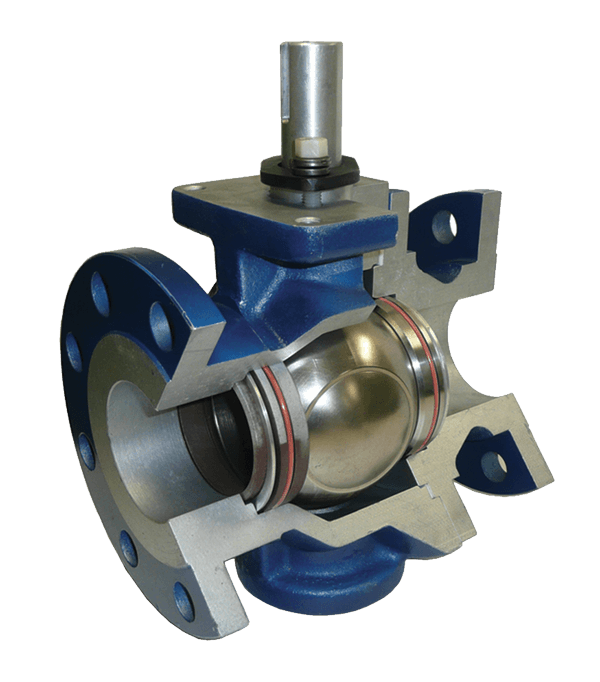
| Material | Advantage |
|---|---|
| Steel+Steel | Provides a durable metal-to-metal seal, suitable for high-temperature and high-pressure environments. |
| Steel+Copper | Combines the strength of steel with the malleability of copper for a reliable seal under extreme conditions. |
| Steel+Graphite | Offers excellent heat resistance and sealing capabilities, ideal for high-temperature applications. |
| Steel+Alloy | Utilizes various alloys to enhance durability and resistance to corrosion and wear, suitable for the most demanding applications. |
Stem
The stem connects the disc to the actuator and transmits the torque required to rotate the disc. It is designed to withstand the mechanical stresses involved in the operation of the valve. Stems are often made from stainless steel or other corrosion-resistant materials to ensure long-term durability. Some designs feature a blowout-proof stem to enhance safety by preventing the stem from being expelled from the valve body under pressure.
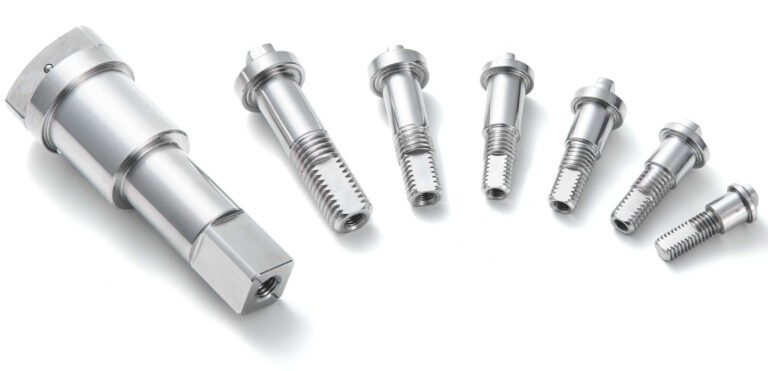
| Material | Advantage |
|---|---|
| Stainless Steel | Durable and corrosion-resistant. Suitable for harsh environments. |
| Carbon Steel | Strong and economical. Ideal for general use. |
| Monel | Highly resistant to corrosion in marine environments. |
| 17-4 PH Stainless Steel | High strength and toughness. Suitable for demanding applications. |
Types of Ball valve
Butterfly valves are categorized based on various design features and functional aspects. Here’s a detailed explanation of the different types:
1. How many type of ball valve
When it comes to choosing the right ball valve for your system, understanding the specific types and their features can be a game-changer. Here’s a quick guide to the main types of ball valves by functionality and what makes each one special.
Floating Ball Valve
Think of a floating ball valve as a dependable all-rounder. The ball is held in place by two seats, which press against it to form a seal. The simplicity of this design makes it great for many everyday applications.
- Best For: Low to moderate pressure systems like water supply or HVAC. It’s straightforward and gets the job done without too much fuss.
- Keep in Mind: High pressure can cause the ball to push against the downstream seat too hard, leading to faster wear. It’s not your go-to for high-pressure needs but works wonderfully for general use.
Trunnion Ball Valve
Need something tougher? Trunnion ball valves are your heavy-duty option. The ball is anchored by trunnions (support shafts) on both ends, which helps manage higher pressures without compromising the seal.
- Best For: High-pressure environments like oil and gas or petrochemicals. The trunnions mean less torque is needed to operate the valve, making it perfect for automated systems.
- Keep in Mind: This type is more complex and can be pricier, but when you need maximum reliability under pressure, it’s worth it.
V-Port Ball Valve
If precision is your priority, V-port ball valves are where it’s at. The V-shaped bore means you get fine-tuned control over flow rates, which is crucial when you need accurate flow adjustments.
- Best For: Situations requiring precise flow control, like chemical dosing or water treatment. It’s like having a flow controller and shut-off valve in one package.
- Keep in Mind: They’re more sensitive to wear, especially with abrasive fluids, and can cost more upfront. But if precise flow is your goal, they’re invaluable.
Multiport Ball Valve
Looking for versatility? Multiport ball valves have you covered. With multiple ports, these valves can mix, divert, or change flow directions, all within a single unit.
- Best For: Complex flow systems where you need to manage multiple streams or directions, such as in chemical processing or fluid mixing setups.
- Keep in Mind: Their flexibility can be a double-edged sword—they’re more complex to maintain and operate. But if space and simplification are priorities, they’re a smart choice.
2. Based on Connection Design
Threaded Connection
Overview: Threaded ball valves feature female threads on the valve body, designed to screw directly onto male-threaded pipes or fittings. This connection type is straightforward and widely used for smaller systems.
Advantages:
- Easy Installation: No need for welding or special tools, making it quick and cost-effective to install.
- Versatility: Suitable for smaller bore sizes and low to moderate pressure applications.
- Flexibility: Allows for easy disassembly and reassembly, ideal for systems that may require frequent modifications.
Considerations:
- Leak Risk: Threaded connections can be more prone to leaks, especially under high pressure or with frequent vibrations.
- Material Compatibility: Threaded connections are best for non-corrosive environments as the threads can be a weak point if exposed to aggressive chemicals.
Applications: Ideal for residential plumbing, irrigation systems, and small-scale industrial setups where ease of use and flexibility are key.
Flanged Connection
Overview: Flanged ball valves come with flanges on the valve body, allowing them to be bolted directly to flanges on pipes or equipment. This connection type is known for its robust and secure attachment.
Advantages:
- Secure and Leak-Tight: The bolted flanges provide a strong, leak-resistant connection that can handle higher pressures and temperatures.
- Ease of Maintenance: Flanged valves can be easily removed for maintenance without disturbing the entire pipeline.
- Standardization: Available in various flange standards (e.g., ANSI, DIN), making them adaptable to global piping systems.
Considerations:
- Space and Weight: Flanged valves are bulkier and heavier, which may require additional support or space considerations in tight installations.
- Cost: Typically more expensive than threaded connections, both in terms of material and installation.
Applications: Common in industries such as oil and gas, petrochemical, chemical processing, and water treatment, especially where a reliable, heavy-duty connection is needed.
Welded Connection
Overview: Welded ball valves are directly welded into the pipeline, creating a permanent and robust connection. This method eliminates the need for flanges or threads, offering a smooth, streamlined design.
Advantages:
- High Integrity: Welding eliminates potential leak paths, providing superior performance in critical applications.
- Reduced Maintenance: With no flanges or threads to inspect, welded connections require less routine maintenance.
- Compact Design: Welded valves have a smaller footprint, making them ideal for space-constrained environments.
Considerations:
- Permanent Installation: Once welded, these valves are not easily removed or replaced, so they are best suited for applications where long-term reliability is essential.
- Installation Skill: Requires skilled welding and proper alignment to avoid stress and strain on the valve and pipeline.
Applications: Used in pipelines that handle corrosive or hazardous fluids, as well as in high-pressure and high-temperature systems in industries like chemical processing, oil and gas, and power generation.
Clamp (Quick-Connect) Connection
Overview: Clamp or quick-connect ball valves use clamps to secure the valve onto pipes or tubing. This connection is particularly popular in industries requiring frequent disassembly or hygienic conditions.
Advantages:
- Quick Installation and Removal: No tools or welding required, making it fast and convenient, especially in applications requiring frequent cleaning or maintenance.
- Hygienic Design: The clamp connection provides a smooth interior with minimal crevices, reducing the risk of contamination.
- Flexibility: Easily adjustable connections that can be repositioned or modified as needed.
Considerations:
- Pressure Limitations: Typically not suited for high-pressure applications; best used in low to medium pressure environments.
- Connection Security: While easy to install, clamps must be properly tightened to prevent leaks or disconnections.
Applications: Widely used in the pharmaceutical, food and beverage, and sanitary applications where cleanliness and quick changes are essential.
Butt-Weld Connection
Overview: Butt-weld ball valves are welded to pipes using a butt-welding process, creating a strong, seamless connection with minimal flow disruption.
Advantages:
- Smooth Flow Path: The butt-weld design ensures a smooth interior with minimal turbulence, enhancing flow efficiency.
- Strength and Integrity: Provides a durable connection that withstands high pressure and temperature conditions without the risk of leaks.
- Reduced Footprint: Butt-weld valves offer a compact installation with no bulky flanges or threaded joints.
Considerations:
- Installation Expertise: Requires precise welding and alignment, typically needing skilled labor.
- Non-Removable: Once installed, removing or replacing a butt-weld valve involves cutting the pipe, which can be time-consuming and costly.
Applications: Commonly used in high-flow, high-pressure systems in industries such as oil and gas, power generation, and process piping.
Socket Weld Connection
Overview: Socket-weld ball valves involve welding the valve to pipes using a socket-welding technique, which provides a strong connection that resists vibration and thermal expansion.
Advantages:
- Robust and Reliable: The socket weld ensures a sturdy, leak-proof connection, ideal for high-pressure and high-temperature conditions.
- Vibration Resistance: Socket-weld connections are less susceptible to loosening under vibration, making them suitable for dynamic environments.
- Compact Installation: Provides a cleaner, more streamlined look compared to flanged valves, with less space required.
Considerations:
- Installation Difficulty: Similar to other welded options, socket-weld connections require skilled labor and precise alignment.
- Maintenance Challenges: Not easily removed once installed, so they’re best for applications where valve replacement is infrequent.
Applications: Frequently used in refineries, petrochemical plants, and chemical processing facilities where high durability and resistance to thermal cycling are crucial.
3. Based on Actuation Method

Manual Ball Valve
Ball valves are often operated manually using a hand lever or gear mechanism, making them straightforward and reliable for applications where automation isn’t necessary. These valves offer efficient on-off control, are easy to use, and are generally cost-effective.
Advantages:
- Cost-Effective: Manual operation eliminates the need for additional actuators, reducing overall costs.
- Ease of Use: Simple lever or gear mechanisms make operation intuitive, with minimal training required.
- Reliable On-Off Control: Provides a tight shutoff with minimal maintenance needs.
Common Handle Types:
- Standard Lever Handle: Offers quick on/off control and clear visual indication of valve position.
- Lockable Handle: Provides additional security by allowing the valve to be locked in either the open or closed position, preventing unauthorized operation.
- Extended Handle: Useful for valves installed in hard-to-reach areas or for providing additional leverage on larger valves.
- T-handle: Often used for space-constrained installations where a standard lever might not fit.
Electric Ball Valve
Electric ball valves use an electric actuator to automate the opening and closing of the valve, offering precise control and integration into automated systems. Our electric actuators include both domestic options and well-known brands from Taiwan, such as UNID and SUN YEH. These brands are recognized for their reliability and quality in automation solutions.
Operation:
- ON/OFF Type: Operates in a simple open or closed mode, ideal for basic flow control where precise modulation is not required.
- Modulating Type: Allows for precise control over flow rates, utilizing input signals like 4-20 mA or digital protocols to adjust the valve position incrementally. This type is ideal for applications needing exact flow regulation and can be integrated with control systems for feedback and monitoring.
Choice of Actuator Brands:
We offer a variety of actuator options, including reliable domestic models and top-quality Taiwanese brands like UNID and SUN YEH. These brands provide robust performance and a range of functionalities, from basic ON/OFF to advanced modulating control.
Common Handle Types:
- Quarter-Turn Actuators: Best for ON/OFF operations, providing straightforward and robust control.
- Proportional Actuators: These actuators allow for modulating control, receiving signals like 4-20 mA to adjust the valve position accurately.
- Smart Actuators: Advanced options that offer features such as diagnostics, communication capabilities (e.g., Modbus, Profibus), and real-time feedback, suitable for sophisticated automation systems.


Pneumatic Ball Valve
Pneumatic ball valves use compressed air to operate the valve, providing a fast and efficient method of controlling flow in a variety of industrial applications. These valves are ideal for automated systems where quick, reliable operation is essential.
Operation:
- Pneumatic Actuation: The valve is driven by a pneumatic actuator that uses compressed air to rotate the ball within the valve, allowing it to open or close. The actuators can be single-acting (spring return) or double-acting, depending on the specific control needs.
- Control Types: Pneumatic ball valves can be used for simple ON/OFF control or modulating control, where the valve’s position is adjusted proportionally to control signals for precise flow regulation.
Common Features:
- Single-Acting Actuators (Spring Return): The valve returns to its default position (open or closed) when air pressure is removed, providing a fail-safe mechanism.
- Double-Acting Actuators: Requires air pressure to both open and close the valve, offering precise control over valve position without a default state.
- Positioners and Solenoids: Optional accessories that enhance control by providing feedback on valve position or enabling remote actuation via control signals.
The FAQS about when we want to buy ball valve
1. Why is the material of the ball important in a ball valve?
The ball’s material is crucial because it directly impacts the valve’s performance, durability, and suitability for different fluids and conditions. Harder materials like stainless steel or chrome-plated brass offer excellent resistance to wear and corrosion, making them ideal for abrasive or corrosive environments. For applications requiring high purity or chemical resistance, materials like ceramic or PTFE-coated balls are used. The choice of material should align with the fluid characteristics and operational demands to ensure long-term performance.
2. How does the seat material influence a ball valve’s functionality?
The seat material is vital in maintaining a leak-proof seal and ensuring reliable valve operation. Common materials include PTFE, which offers excellent chemical resistance and low friction but has temperature limitations. Metal seats provide durability in high-temperature and abrasive applications but may not seal as tightly as soft seats. Elastomeric seats offer flexibility and a good seal at low pressures but are limited by their temperature and chemical compatibility. Understanding the operational environment and selecting the right seat material can optimize valve performance and longevity.
3. What are the advantages of a floating ball design versus a trunnion-mounted ball design?
A floating ball design relies on the ball being pushed against the downstream seat by fluid pressure, which helps maintain a tight seal. This design is simpler and works well for smaller valves and lower pressure applications. However, it can lead to uneven wear on the seats over time. Trunnion-mounted designs feature a ball that is anchored by trunnions at both ends, providing stability and reducing operational torque. These are better suited for larger sizes and higher-pressure environments, where sealing performance and reduced wear are critical. Choosing the right design depends on valve size, pressure, and operational needs.
4. Can ball valves handle high-temperature and high-pressure conditions?
Yes, ball valves are designed to handle a wide range of temperature and pressure conditions, but the choice of materials and design is key. Metal-seated ball valves, for example, can withstand higher temperatures compared to soft-seated ones. Similarly, trunnion-mounted ball valves are more suitable for high-pressure applications due to their enhanced stability and lower operational torque. Always ensure that the valve’s material and design specifications match the operational requirements, including temperature, pressure, and the nature of the fluid.
5. How does the choice of actuator affect the performance of a ball valve?
The actuator type significantly impacts how a ball valve operates. Manual actuators (like levers) offer simplicity and cost-effectiveness for straightforward, on/off control. Electric actuators provide precise control and are suitable for applications requiring automation or remote operation. Pneumatic actuators are favored for their fast response and are often used in industrial settings where air supply is readily available. Hydraulic actuators deliver high force and are ideal for large valves requiring robust control. The right actuator should be chosen based on control needs, response time, and environmental conditions.
6. What is the role of the flow coefficient (Cv) in ball valve selection?
The flow coefficient (Cv) measures a valve’s capacity to pass fluid and is a key factor in valve sizing. It indicates how much flow can pass through the valve at a specific pressure drop, helping to ensure that the valve meets the system’s flow requirements. A higher Cv value means the valve can pass more flow, which is essential for minimizing pressure drop in high-flow applications. Correctly calculating and matching the Cv value to your system’s needs ensures efficient flow control and system performance, avoiding issues like cavitation or excessive pressure loss.
7. How do ball valves compare to other types of valves in terms of flow control?
Ball valves offer quick shut-off and low flow resistance, making them ideal for applications needing rapid, full-flow control with minimal pressure drop. Compared to gate or globe valves, ball valves provide a more compact and lower-maintenance solution, especially in automated systems. However, they may not be as suitable for precise throttling as globe valves. Understanding these differences helps in choosing the right valve type for specific control requirements, balancing cost, maintenance, and performance.
Let's Started Today!
If you’re seeking the ideal valve solution for your industrial projects, we’re here to support you.
Tell us your requirements, and our team will provide the guidance and information you need to make the best decision for your operations.
Reach out now to enhance your systems with our reliable and efficient valve technologies.
Support
info@byzervalve.com
Ask For Quote Now!
Reply Within 24 Hours
Your email is confidential and safe with us. Our team guarantees your privacy.
